The EKWB EK-XLC Predator 240 Liquid Cooler Review
by E. Fylladitakis on December 15, 2015 9:00 AM EST- Posted in
- Cases/Cooling/PSUs
- AIO
- Water Cooling
- Liquid Cooling
- EKWB
The EKWB EK-XLC Predator 240
At first sight, the EK-XLC Predator 240 appears very similar to AIOs that we have seen and tested before. A closer look however reveals that this kit is a fully modular liquid cooling system, with the main difference being that it has been pre-assembled at the factory. The hoses are removable and there are fluid filling and air bubble draining ports. Perhaps the only thing that it has it resembling a typical AIO system is that the fluid pump is merged with the radiator.
The CPU block is relatively simple and very small compared to other AIO systems, as it has no pump on it. It is made of a Plexiglass top with a metallic cover, with a steel retention brace and a copper base. The hoses can be removed in order to add more parts or clean the block, but they need to be inserted at the same holes again. Reversing the hoses has a strong impact on performance, reducing it by nearly 20%. Note that the EK-XLC Predator 240 can only be installed on Intel LGA1150, LGA1155, LGA1156 and LGA1366 CPUs, with LGA2011 support available if extra parts are purchased. None of AMD's CPUs are currently supported.
EKWB machined the copper base of the block down to a perfect mirror finish. It is almost a shame that copper is very soft and the perfect finish will be impaired when the block gets mounted on a CPU even once. Inside the block we found a metallic flow guidance plate, forcing the fluid to enter the microchannels from the center and exit from the sides. It is very well machined, without imperfections.
EKWB suggests in the manual that the microchannels should be cleaned in order to maintain maximum performance, however we strongly advice against such action by anyone who is not a liquid cooling expert. The process requires draining the system, opening the block carefully, cleaning it with specific solvents and resealing it. A new user to such a process should be extremely careful when refilling the system, and perhaps read/watch online guides, or the user will have to deal with leaks from improper sealing.
The radiator assembly comprises most parts of the system, as it includes the fluid pump, the air flow fans and the power controls. The pump is attached to the edge of the radiator, on a plastic frame that also serves as a basic fluid tank. The height of the pump encourages the presence of two cooling fans at the top side of the radiator, and two fans are preinstalled in a pull configuration. EKWB clearly assumes that the radiator will be installed at the top of a case, pulling air out of the case. The position of the pump also prevents the radiator from being installed vertically, as the pump will be unable to circulate the fluid, especially if the system is not filled to the brim and air removed.
There are two fluid filling and air bubble draining ports on the radiator, one next to the pump and one on the other side of the metallic body. If the user wants to drain and refill the system for any reason, be it for an upgrade or maintenance, the system has to be refilled from the port on the side of the radiator, while the radiator is standing upright. Once filled, the Predator 240 has to be powered on and the port next to the pump needs to be opened, draining the air and adding fluid if necessary. Both ports require a 6 mm hex key to be opened. The user needs to be very careful and gentle when closing the port next to the pump, as the body is plastic and it can be easily destroyed by the high torque of the 6 mm tool. The other port is on the metal body and is much more robust.
There is just one issue with the radiator which users might face - the thickness. The radiator and fan assembly is 68 mm thick, which is considerably thicker than what most case manufacturers have taken into account. There are cases that are designed to hold 240 mm radiators at their top panels but do not accommodate this kind of clearance. We strongly suggest checking the clearance of the case before purchasing this unit, or make sure that the case is in the EKWB's compatibility list.
The power control board near the edge of the radiator is small, simple and very clever. It powers the fans and the pump from a single SATA power cable, getting rid of the cable mess. It gets a PWM signal from a single motherboard fan header and adjusts the speed of the fans and of the fluid pump. If no signal wire is attached, the assembly will just constantly operate at maximum speed.
What is odd about the power controller is that there is a single extra header for a third fan. As the EK-XLC Predator 240 is a dual fan radiator, the reasonable move would be to have two extra headers, in case someone wants to install two more fans for a push-pull configuration. Nevertheless, it is likely installed it there with a secondary (e.g. case) fan in mind.



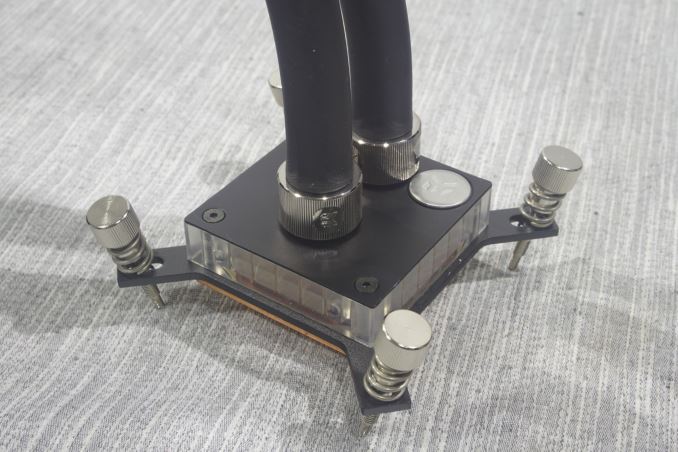
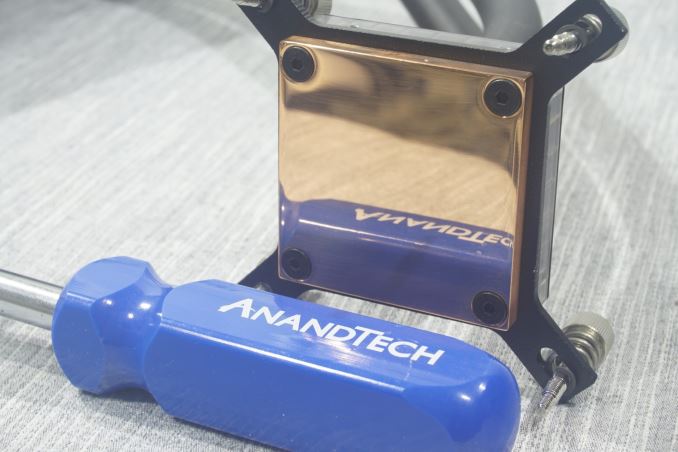
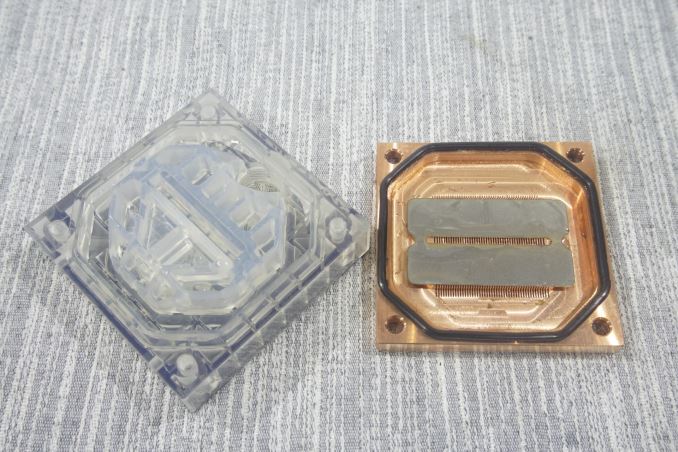
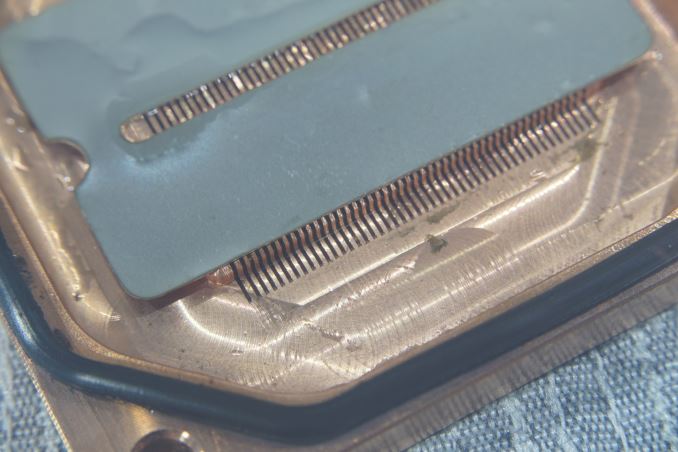
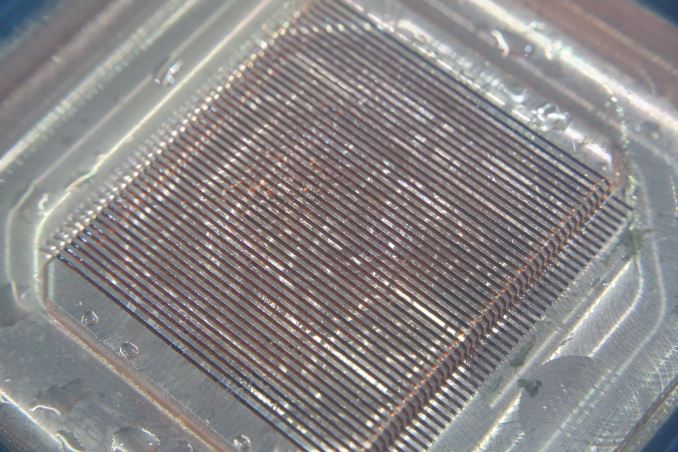
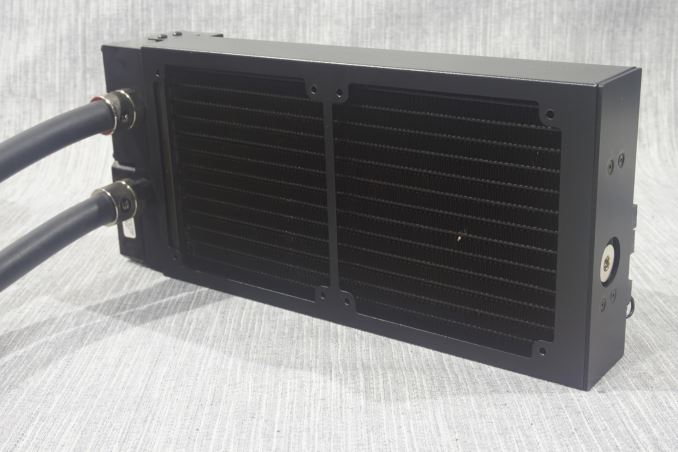
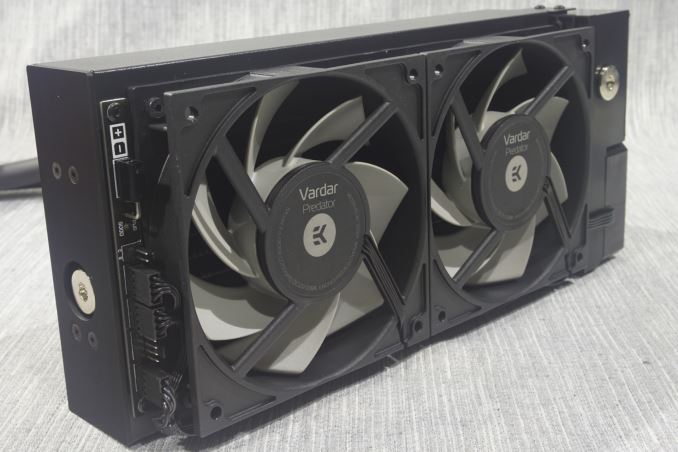
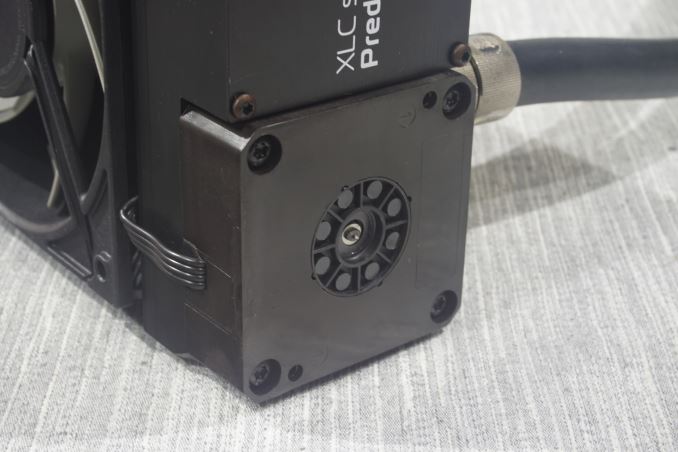
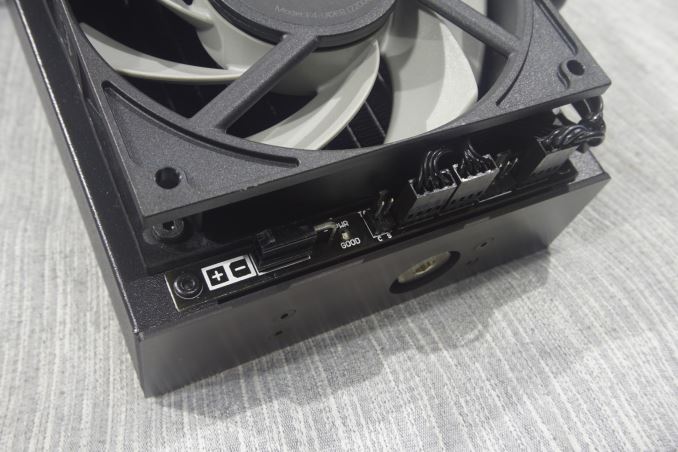








36 Comments
View All Comments
zeeBomb - Tuesday, December 15, 2015 - link
Awesome coolerHollyDOL - Tuesday, December 15, 2015 - link
So, with a SkyLake, you can cool at about 10°C above ambient at 35dB? That's definitely NOT BAD outcome.DanNeely - Tuesday, December 15, 2015 - link
Almost certainly not; you'll see temps significantly higher. The heater blocks E. Fylladitakis uses to simulate a thermal load that's more stable than you can get with a real CPU have a major failing that makes them impossible to equate to performance on an actual system useless. The temperature reported on your CPU comes from a handful of tiny hotspots on the die that do a lot more work, consume the majority of the power, and are much hotter than the rest of the die.The hot spots are why, although TDPs have stayed more or less fixed on desktop chips since the Core 2 era, actual CPU temperatures have been on a steady upward swing. Each new process shrinks the bits of the CPU that do the actual calculations and generate the largest part of the heat into a smaller chunk of the die. The extra die space gets filled up with cache which doesn't have hot spots or GPU space that because they have large numbers of tiny cores instead of a few big ones can spread out the heat a lot better.
DanNeely - Tuesday, December 15, 2015 - link
The CPU waterblock in this kit looks a lot like the EK Supremacy EVO in my custom loop. That block is explicitly intended to be taken apart and reassembled prior to installation (it has several parts intended to control water flow that are intended to be swapped for different CPU models), Unless you're an idiot who can't be bothered to read directions it was strait forward to follow the printed instructions to open it up, swap in the parts for my CPU and then put it back together.That experience also has me concerned about your testing methodologies results will correlate to real world relative performance. The intent of adjusting all of those fiddly bits in the block was to direct the flow to maximize cooling of the hottest parts of each specific chip; something that can't be captured by a simple resistive heating block. Testing I saw a few people who were curious if it really mattered showed spreads between different internal configurations of several degrees; comparable to the total spreads you're seeing among decent water cooler kits.
londiste - Tuesday, December 15, 2015 - link
The extra header on the fan controller is with Predator 360 in mind.tabascosauz - Tuesday, December 15, 2015 - link
This entire article was written with the assumption that the only benefit offered by the Predator is its expandability, as with the H220-X. That's not the point of the kit.The point is that when you buy the Predator, you are basically buying EK products, with the added benefit that someone has already assembled the parts for you. The CPU block is the same Supremacy (EVO?) block that you get off of the market for your custom loop, and so are the Vardar F4 fans and the Coolstream PE rad.
It's not meant to be an end to the endless CoolIT and Asetek AIOs on the market. People aren't going to buy it in comparison to the H100i. They'll buy because it's a nice place to start one's future custom loop system.
tabascosauz - Tuesday, December 15, 2015 - link
I suppose I'm expecting a bit too much from AT reviewers these days. Clearly, they don't do even the slightest bit of reading before starting their reviewers. Block appears to be small and doesn't have a pump like other AIOs? A bit of digging even into EK's product page for the 240 would reveal that the block is a Supremacy MX and obviously wouldn't have a pump integrated into it, like all proper watercooling CPU blocks (exception made to the Apogee Drive II).forgot2yield28 - Tuesday, December 15, 2015 - link
Your first sentence states that the point is not expandability, and yet your last sentence states that it will be purchased as a start to a future custom loop--ie users will add and modify it, in other words, expanding it. Did I miss something?tabascosauz - Tuesday, December 15, 2015 - link
Ach, never mind. The review is adequate.owan - Wednesday, December 16, 2015 - link
Yea, you missed the fact that its *not only* expandability. There are other products that offer expandability, but EK's offers expandability and quality components you'd probably be happy re-using.